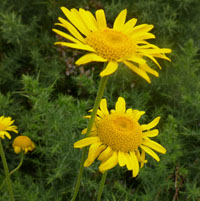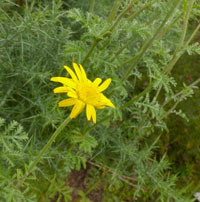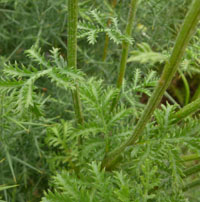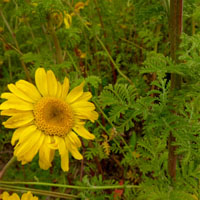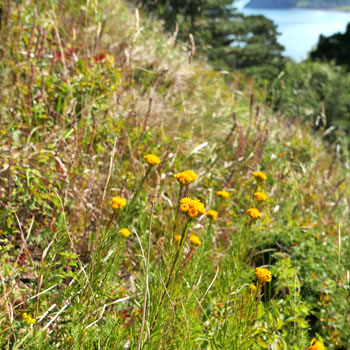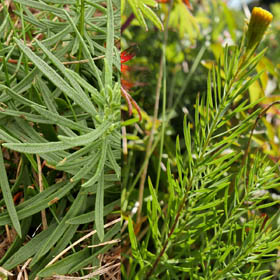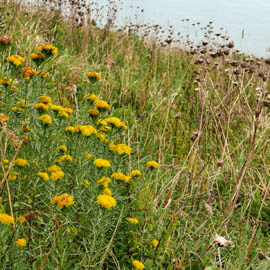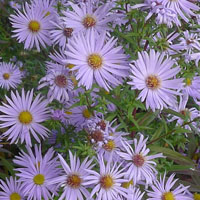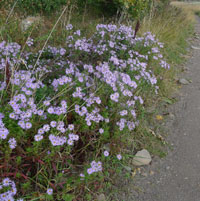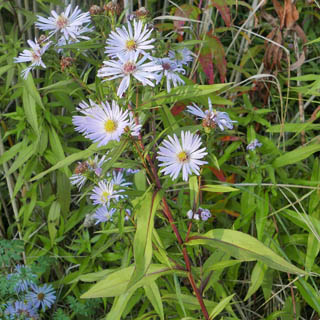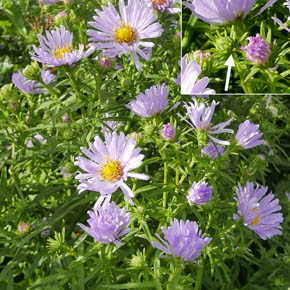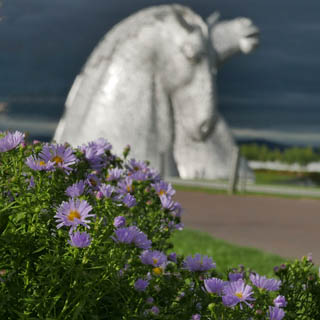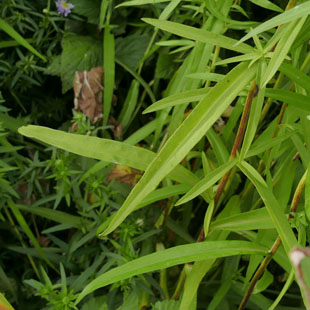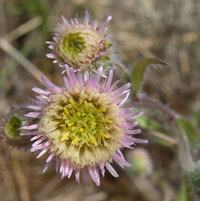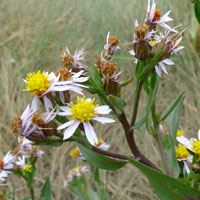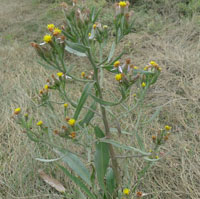Asteraceae . . . . . . Daisy family Part 1 (to Part 2, to Part 3)
Asteraceae all have compound flowers where each apparent flower comprises a number of individual florets. In some such as Daisies and Ragworts these include both ray florets and central tubular florets, other such as dandelions have only flat ray florets (ligules), while others such as thistles only have the tubular florets.
Choose by flower colour:-
Asteraceae-blue, mauve to purple flowers
Centaurea
Michaelmas Daisy
Sea Aster
Erigeron

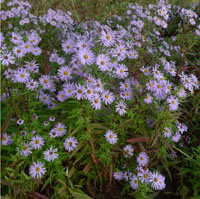
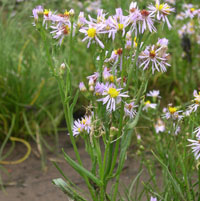
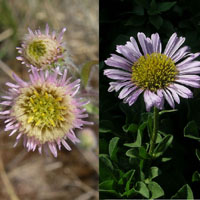
Cicerbita
Cichorium
Petasites
Cirsium
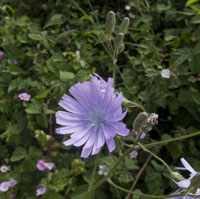
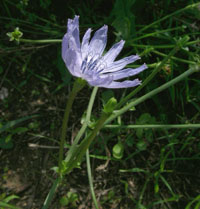
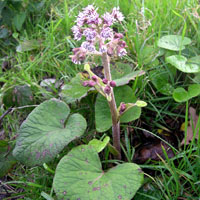
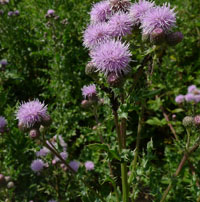
Echinops
Tragopogon
Cynara
Pericallis
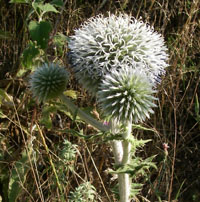
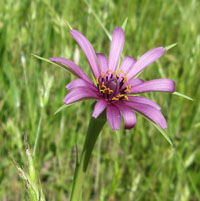
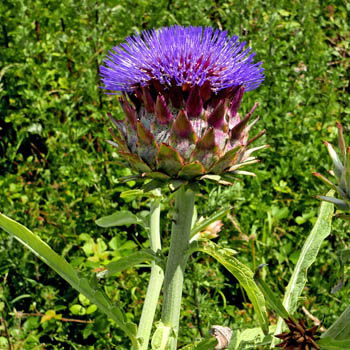
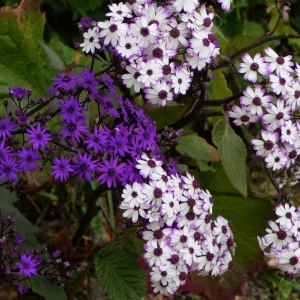
Asteraceae - pink or red flowers:
Arctium
Carduus nutans
Carduus tenuiflorus
Caduus crispus
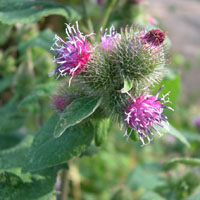
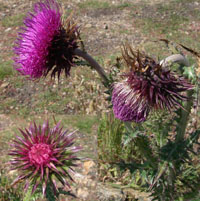
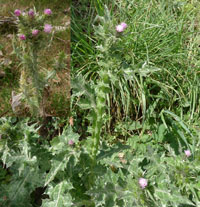
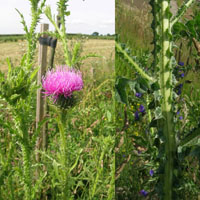
Burdock
Musk Thistle
Slender Thistle
Welted Thistle
Cirsium acaule
Cirsium arvense
Cirsium palustre
Cirsium vulgare
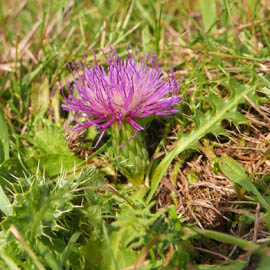

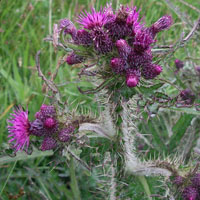
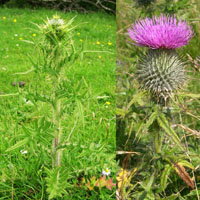
Dwarf Thistle
Creeping Thistle
Marsh Thistle
Spear Thistle
Cirsium heterophyllum
Silybum marianum
Centaurea scabiosa
Centaurea nigra
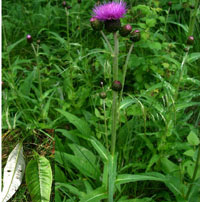

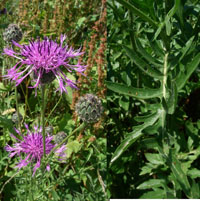
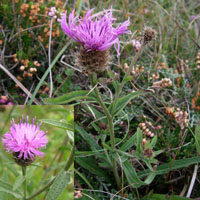
Melancholy Thistle
Milk Thistle
Greater Knapweed
Knapweed
Serratula tinctoria
Centaurea aspera
Onopordium acanthium
Symphyotrichum
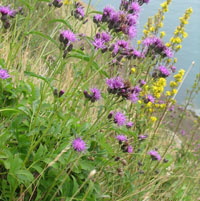
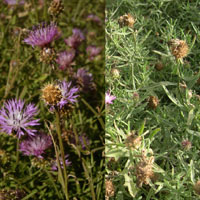
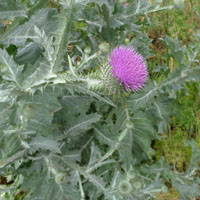

Saw-wort
Rough Star-thistle
Cotton Thistle
Aster
Tripolium
Petasites
Eupatorium cannabinum
Homogyne alpina


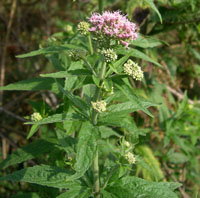
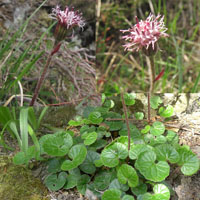
Sea Aster
Winter Heliotrope
Hemp Agrimony
Homogyne
Saussurea alpina
Antennaria dioica
Pericallis
Senecio glastifolius
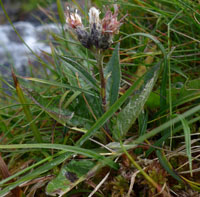
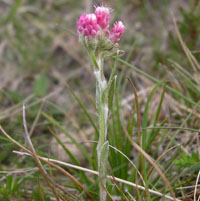

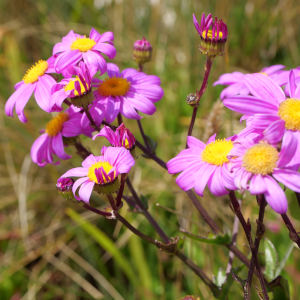
Alpine Saw-wort
Mountain Everlasting
Cineraria
Woad-leaved Ragwort
See also :
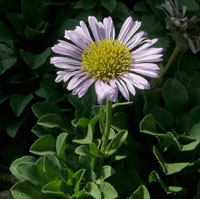
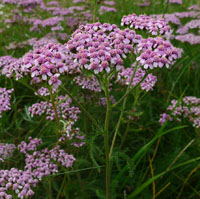
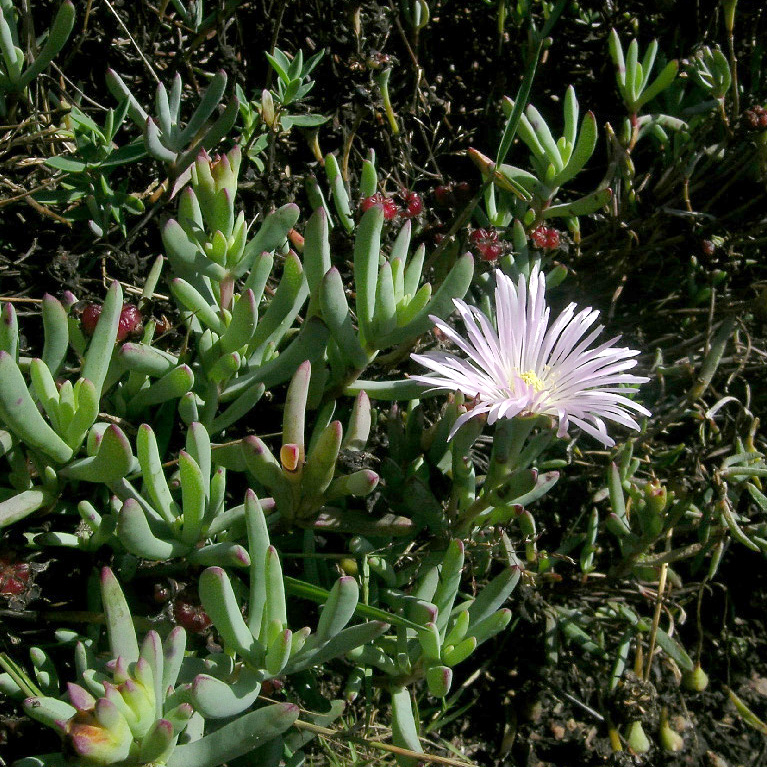

Asteraceae - Yellow
Select the nearest yellow flower from the following 4 options:
Marigold-like
Groundsel-like
Hawk-whatevers
Daisies
Ray & disc florets
Tubular florets only
Flat florets only
Yellow disc and white rays
Tubular florets - groundsel-like and other flowers
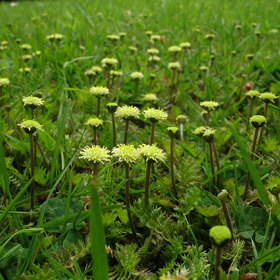

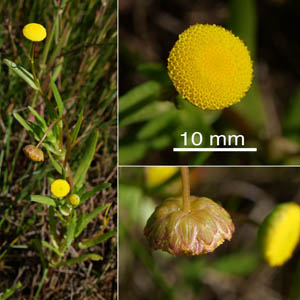

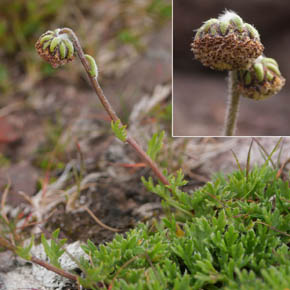
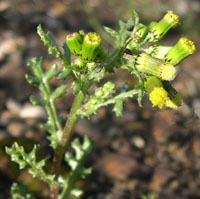
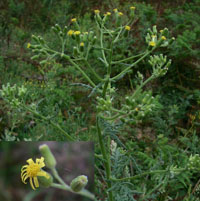
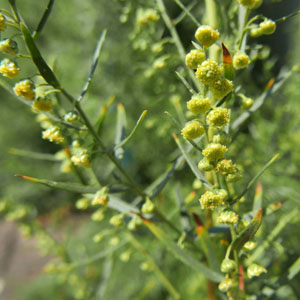
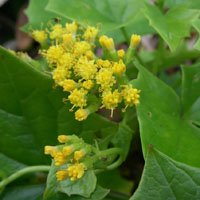
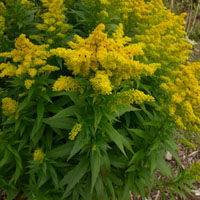
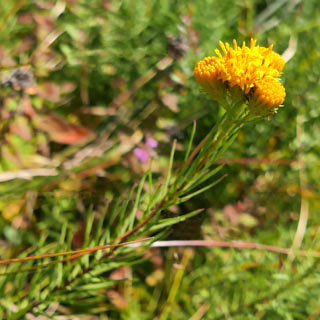
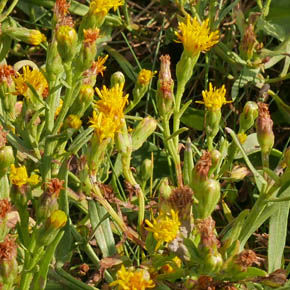
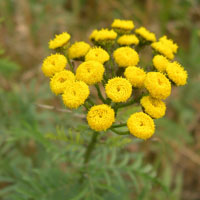
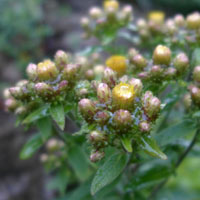

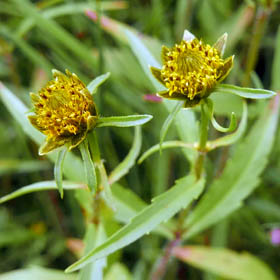
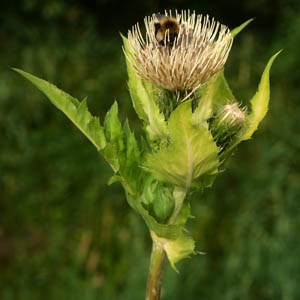
Yellow "hawk-whatevers" - flat florets only: Choose from following SIX groups:
Single flower/unbranched stem
Stems with tiny bracts (cat's ears)
Stems v. bristly
Milky sap
Flower head bracts in 2 rows
Flower head bracts in several rows
- or -
Choose by lf shape
Single flower on unbranched stem:
Tussilago
Taraxacum
Pilosella officinarum
Pilosella peleteriana

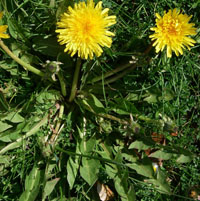
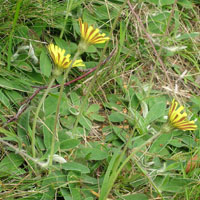
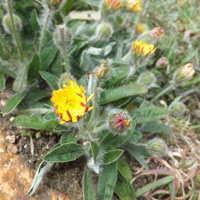
Scorzoneroides
Leontodon
Hypochaeris glabra
Hypochaeris maculata
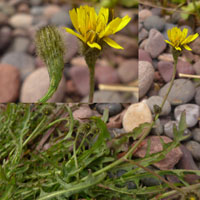
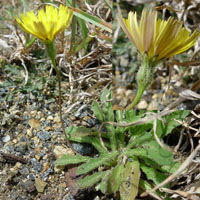
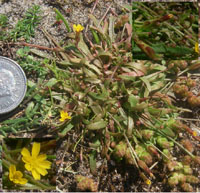
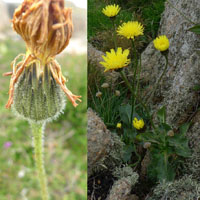
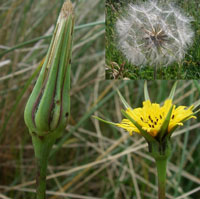
Stems leafless but with tiny bracts (Cat's-ears & Hawkbits):
Hypochaeris radicata
Hypochaeris glabra
Hypochaeris maculata
Scorzoneroides
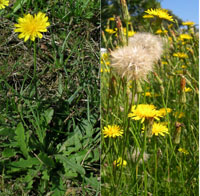


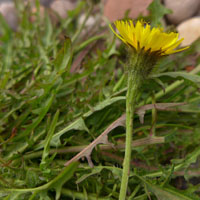

Stems very bristly (Oxtongues, etc.):
Picris
Helminthotheca
Lactuca virosa
Pilosella aurantiaca
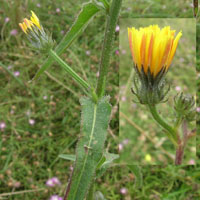
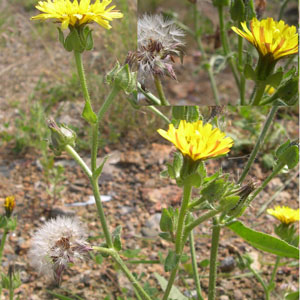
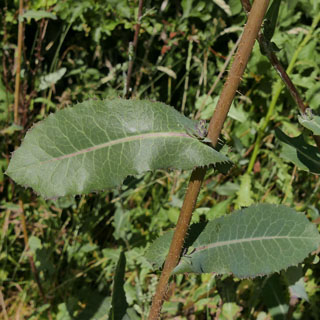

Milky sap (Sowthistles, Lettuces, Dandelions, Goatsbeard):
Sonchus oleraceus
Sonchus arvensis
Sonchus asper
Sonchus palustris
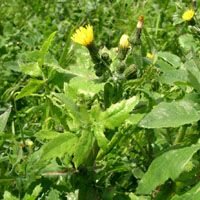
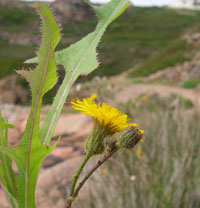
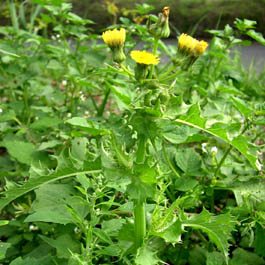
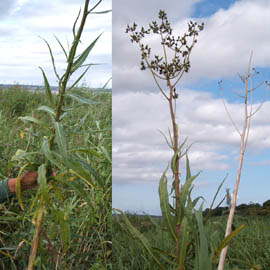
Taraxacum
Tragopogon
Lactuca
Mycelis
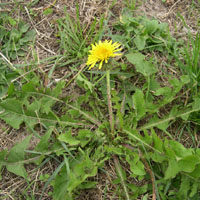

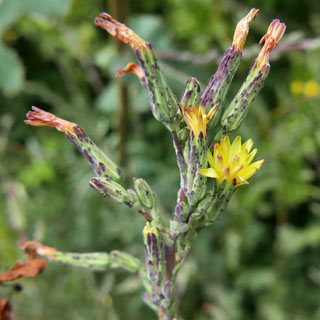
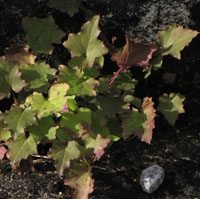
Flower head bracts (phyllaries) in two rows (e.g. Crepis (Hawk's-beard)):
Crepis capillaris
Crepis vesicaria
Crepis paludosa
Crepis biennis
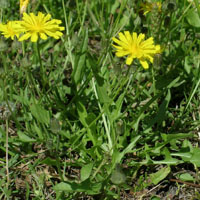
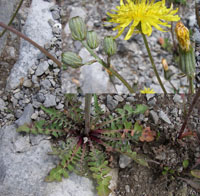
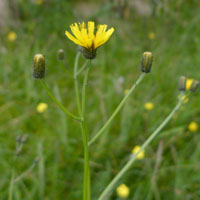
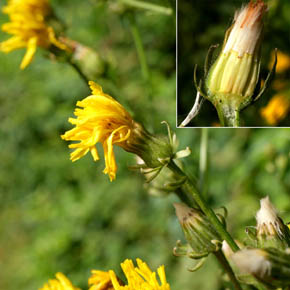


Flower head bracts (phyllaries) in several rows (e.g. Hieracium (Hawkweeds) and hawkbits):
Hieracium
Hieracium maculatum
Hieracium
Hieracium
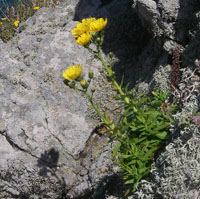
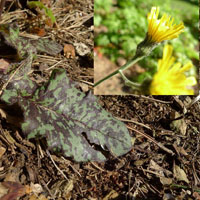
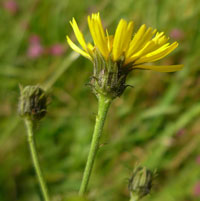
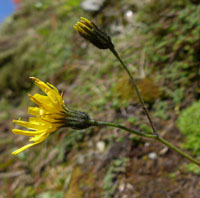
Scorzoneroides
Leontodon
Lactuca
Pilosella aurantiaca




See also:
Carpobrotus (Aizoaceae)
Delosperma (Aizoaceae)
Agrimony (Rosaceae)
Yellow 'hawk-whatevers' by leaf shape:
Hypochaeris glabra
Hypochaeris radicata
Taraxacum
Leontodon saxatilis
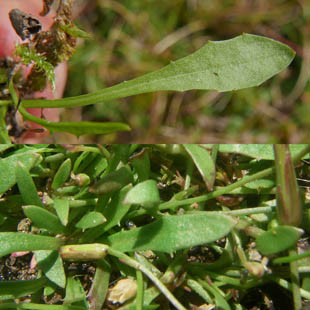
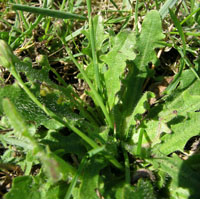
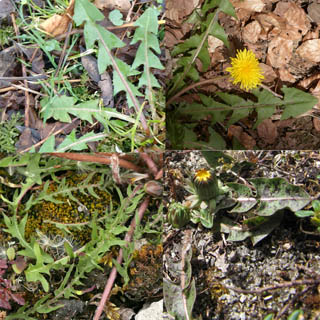
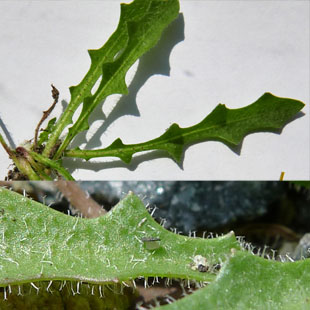
Leontodon hispidus
Scorzoneroides
Crepis capillaris
Crepis biennis
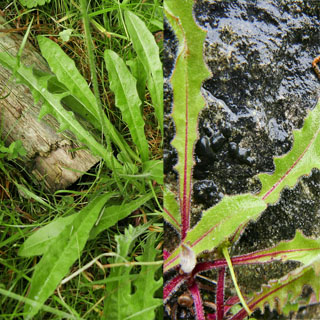
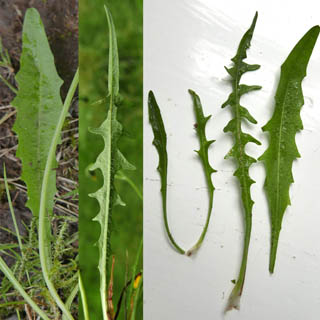
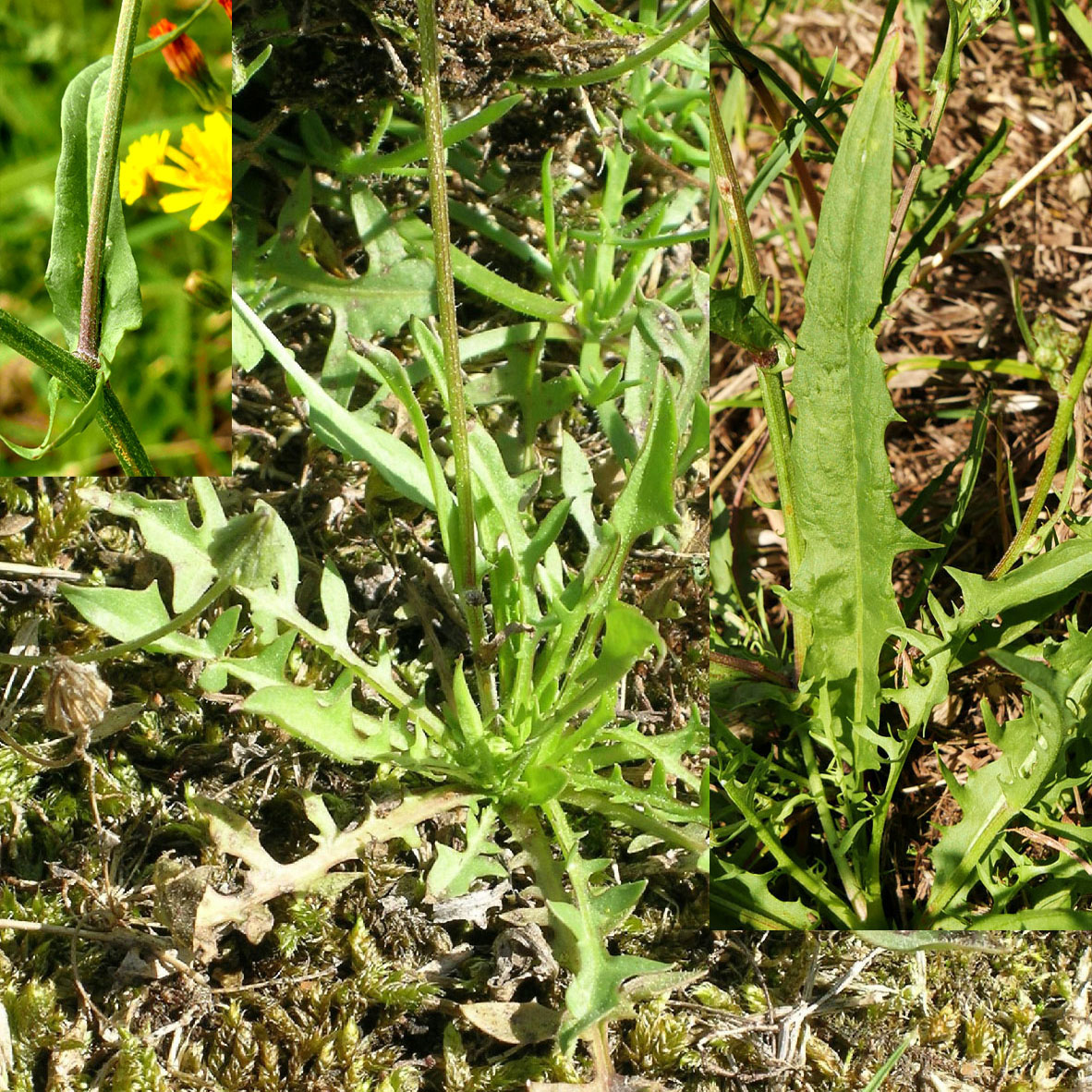
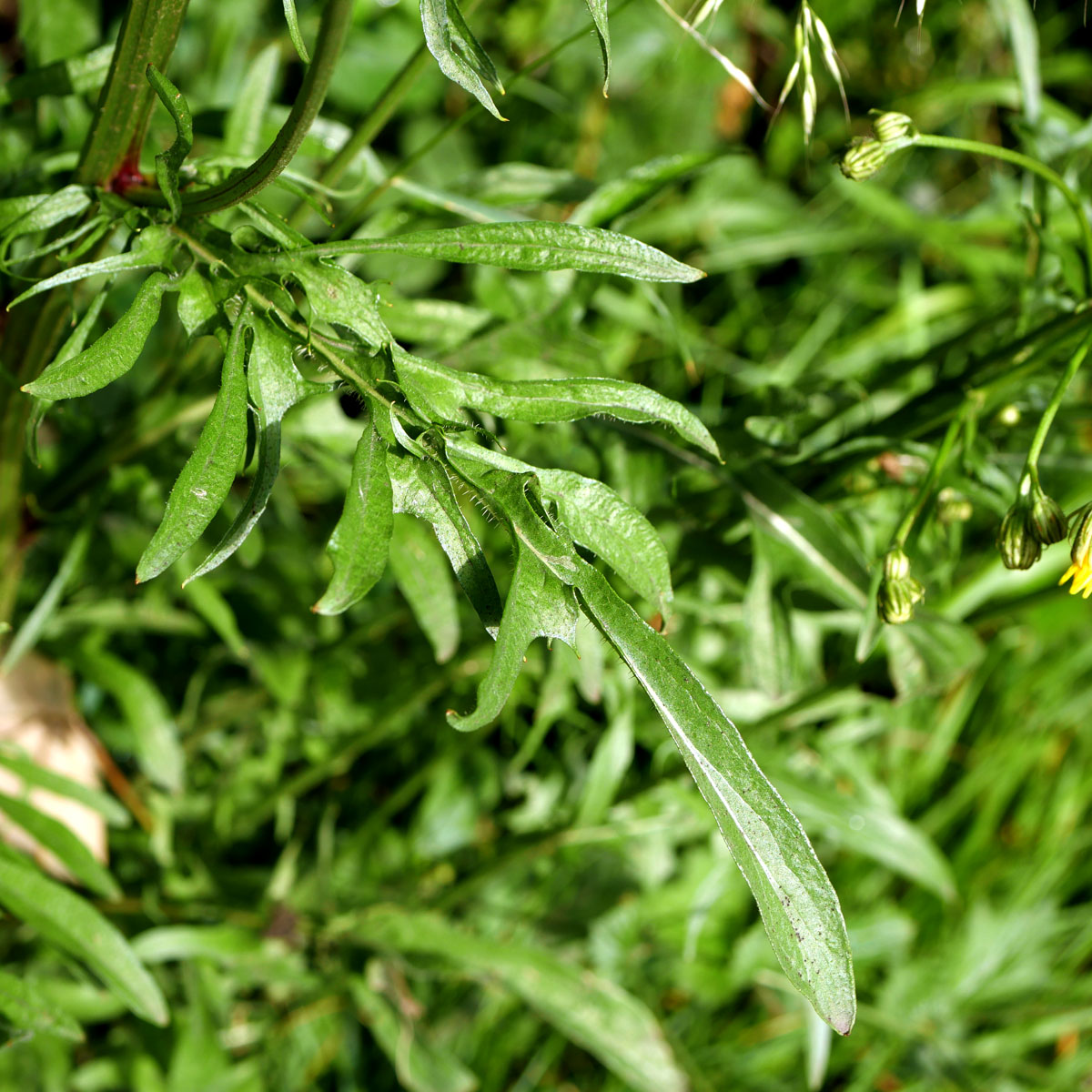
Pilosella
Hypochaeris maculata
Mycelis muralis
Lapsana
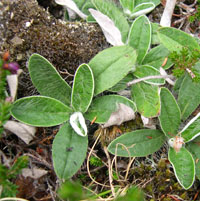
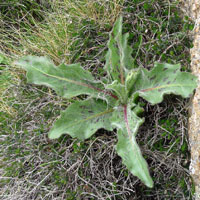

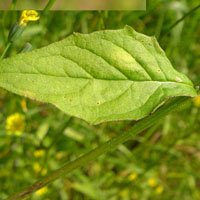
Crepis paludosa
Hieracium
Hieracium
Hieracium
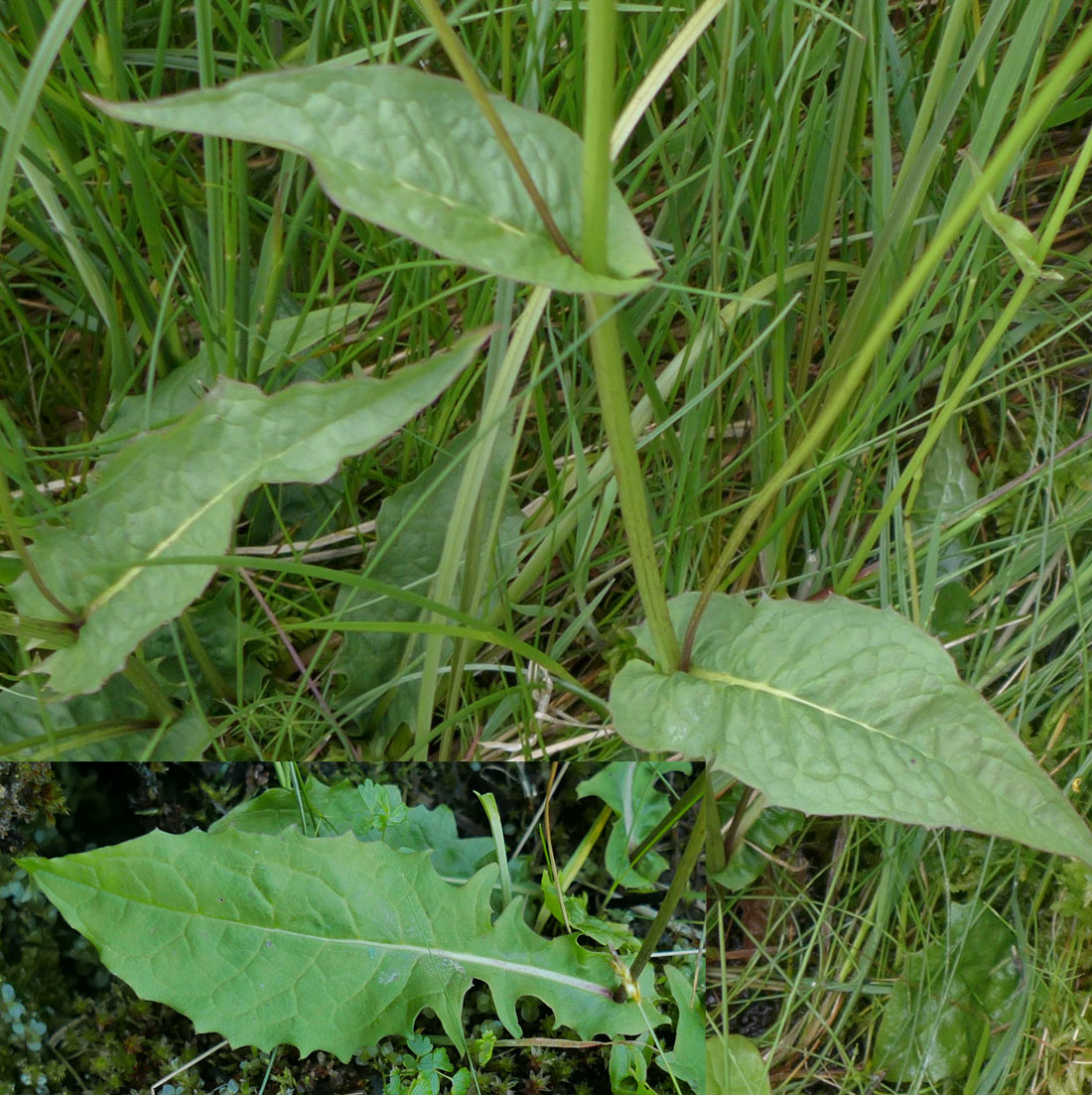
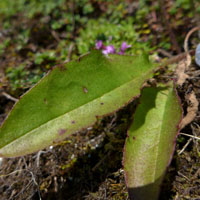
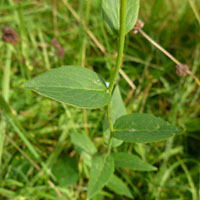

Helminthotheca
Picris
Lactuca virosa
Sonchus oleraceus
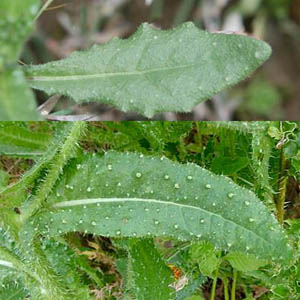
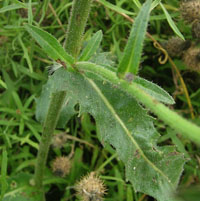

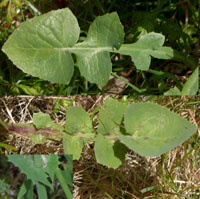
Sonchus asper
Sonchus arvensis
Sonchus arvensis
Guizotia
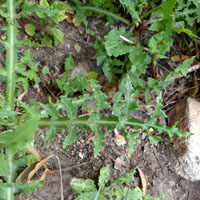


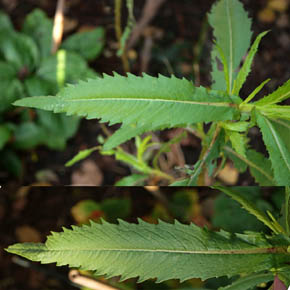
Asteraceae - white: Daisy-like flowers:
Achillea millefolium
Achillea ptarmica
Bellis perennis
Erigeron karvinskianus
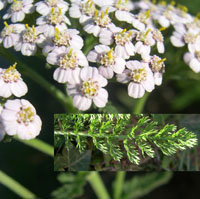

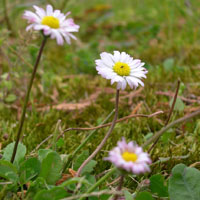
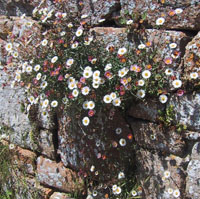
Yarrow; Milfoil
Sneezewort
Daisy
Mexican Daisy
Matricaria chamomilla
Chamaemelum nobile
Tripleurospermum inodorum
Tripleurospermum maritimum
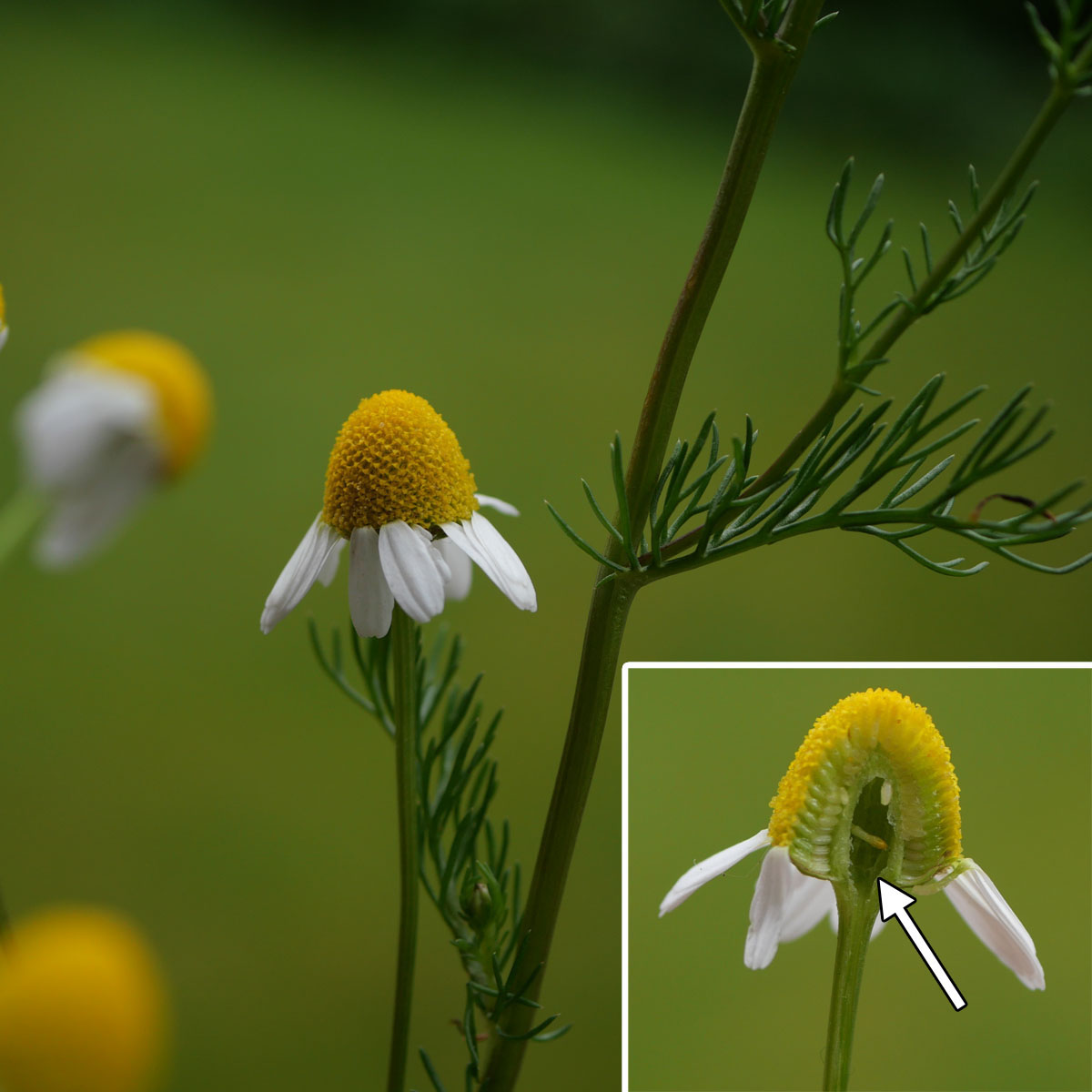

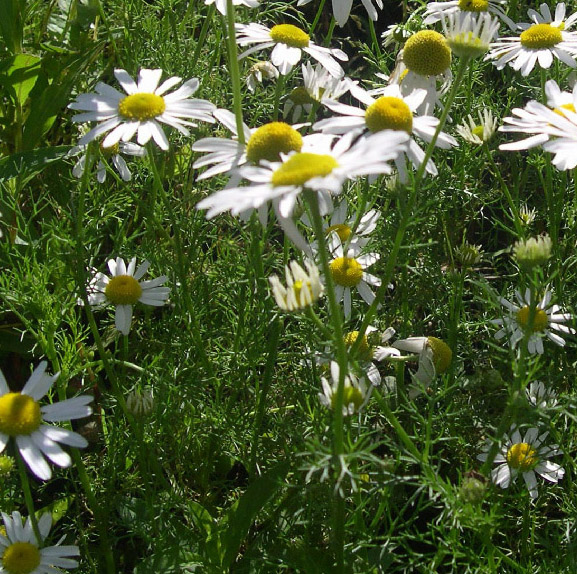
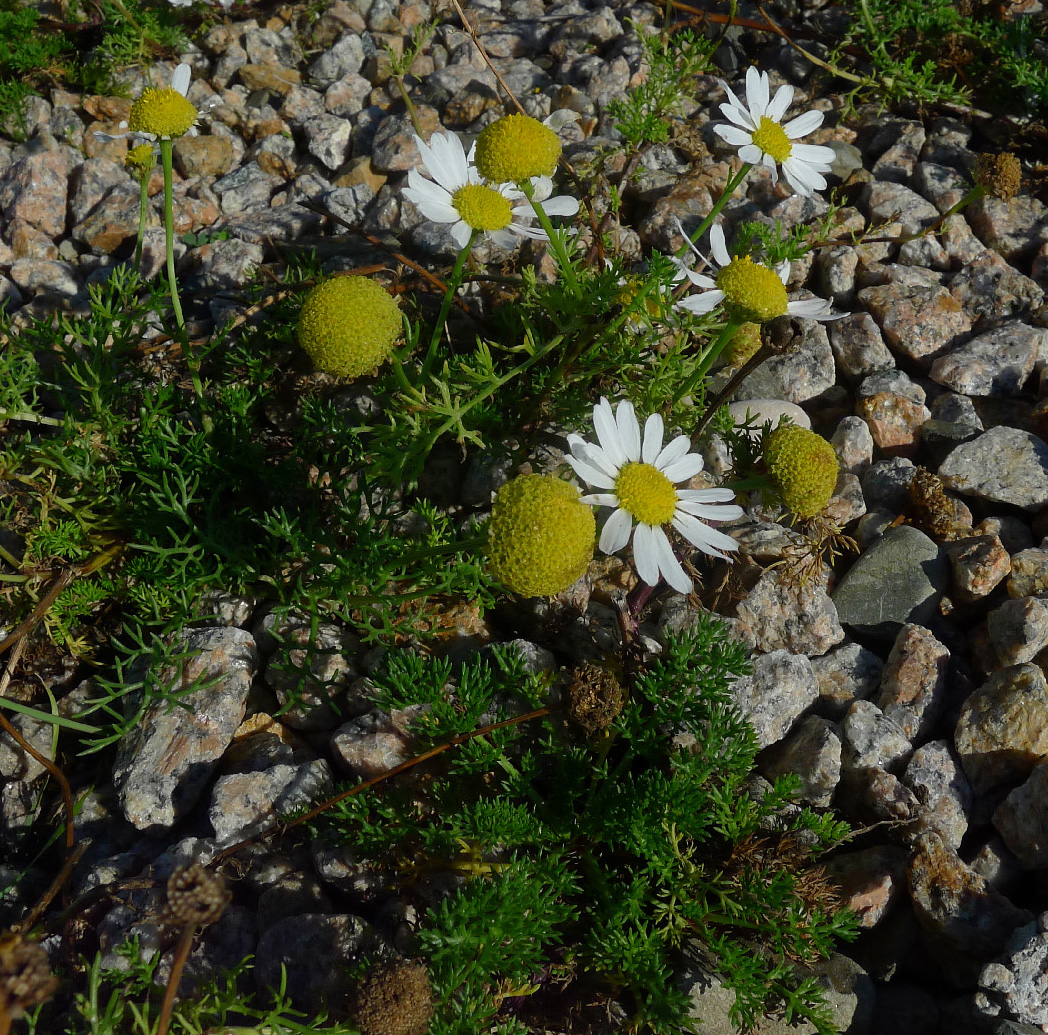
Scented Mayweed
Chamomile
Scentless Mayweed
Sea Mayweed
(NB Chamomile has a strong 'Chamomile' scent)
Anthemis arvensis
Leucanthemum vulgare
Leucanthemum x superbum
Tanacetum parthenium
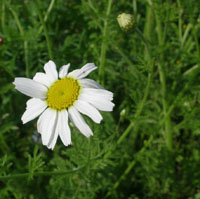
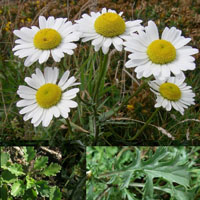

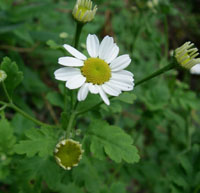
Corn Chamomile
Ox-eye Daisy
Shasta Daisy
Feverfew
Cota austriaca
Galinsoga
Olearia avicennifolia (woody shrub)
Tanacetum macrophyllum
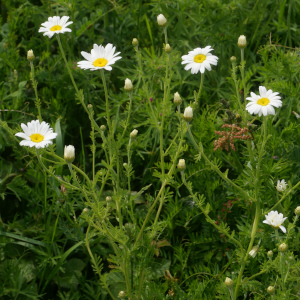
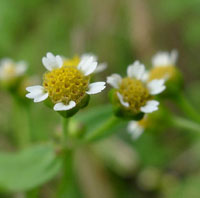
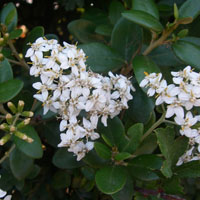
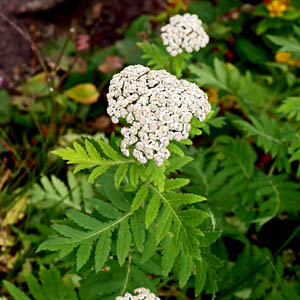
Austrian Chamomile
Galinsoga
Olearia
Rayed Tansy
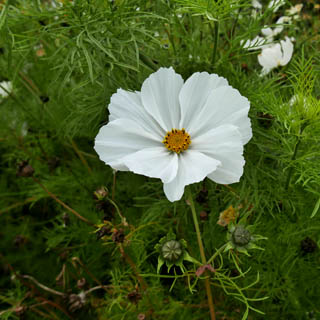
Other white compound flowers:
Antennaria dioica
Achillea ptarmica
Anaphalis margaritacea
Petasites
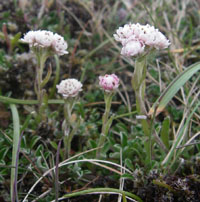
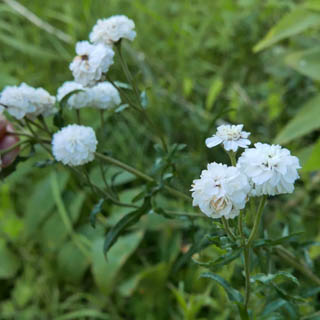
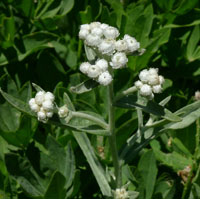
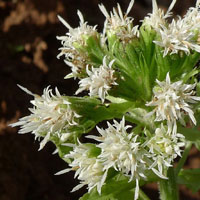
Mountain Everlasting
Double Sneezewort
Pearly Everlasting
White Butterbur
Centaurea aspera
Erigeron
Artemisia vulgaris
Artemisia maritima
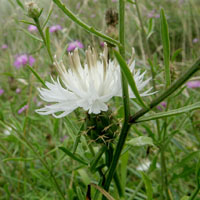
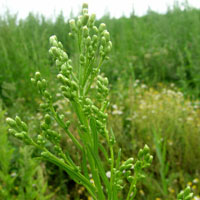
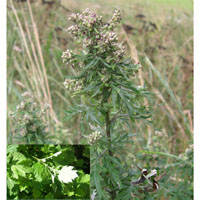
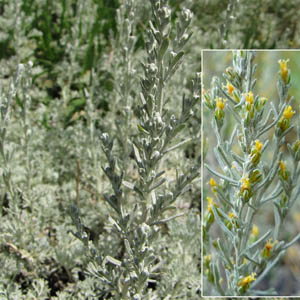
white form of Rough Star-thistle
Fleabane
Mugwort
Sea Wormwood
Cudweeds
Cudweeds
Cirsium oleraceum
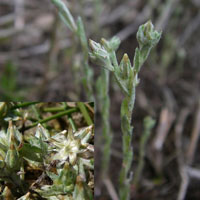
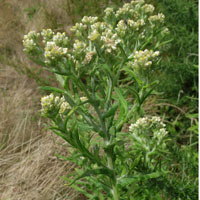

Cudweeds
Cudweeds
Cabbage thistle
Greenish or non-descript flowers:
Cotula squalida
Erigeron
Cudweeds
Artemisia



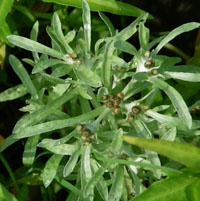
NZ Buttonweed
Fleabanes
Cudweeds
Cudweeds
Artemisia
Ambrosia
Carlina
Siberian Thistle

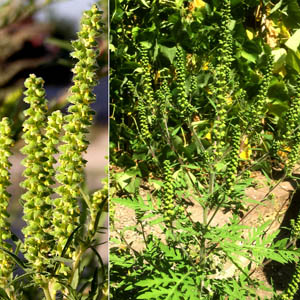


Wormwoods
Ragweed
Carline
Cirsium oleraceum
Olearia lineata
Matricaria discoidea
Cotula sessiis
Artemisia norvegica
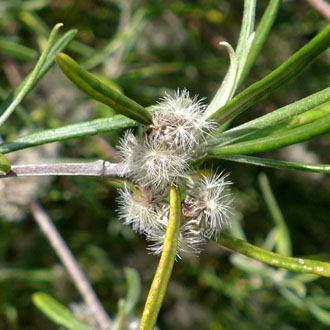
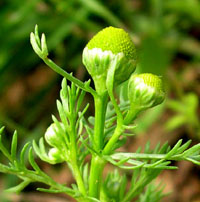
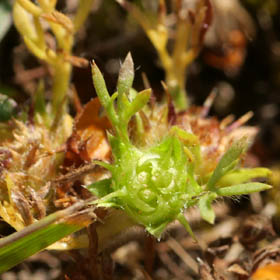

Olearia
Pineappleweed
Bindii
Norwegian Cudweed
Cudweeds - Filago, Gnaphalium, Laphangium, Logfia, Omalotheca, Pseudognaphalium:
Small Cudweed
Cape Cudweed
Jersey Cudweed
Common Cudweed


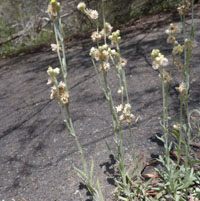
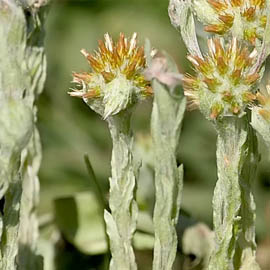
Logfia minima
Pseudognaphalium undulatum
Laphangium luteoalbum
Filago germanica
Marsh Cudweed
Heath Cudweed
Dwarf Cudweed
Mountain Everlasting

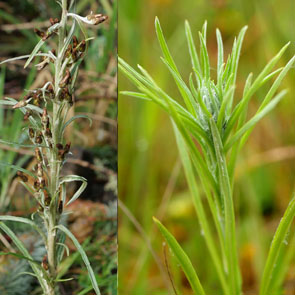
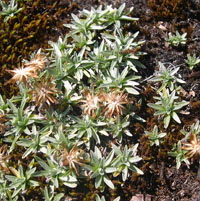

Gnaphalium uliginosum
Omalotheca sylvatica
Omalotheca supinum
Antennaria dioica
NB
G. supinum at tops of mountains;
G. uliginosum in wet areas at lower altitudes
Fleabanes and mugworts
Erigeron canadensis
Erigeron floribunda
Erigeron bonariensis
Erigeron sumatrensis
Artemisia vulgaris

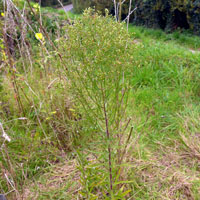

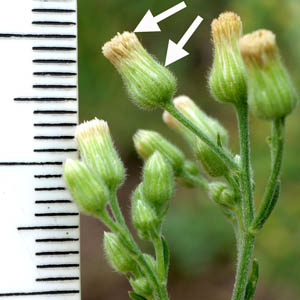

Canadian Fleabane
Bilbao Fleabane
Argentine Fleabane
Guernsey Fleabane
Mugwort
Mayweeds and similar:
Cotula squalida
Matricaria discoidea


NZ Buttonweed
Pineappleweed
See also:
Woody Asteraceae
Olearia
Olearia
Olearia
Euryops


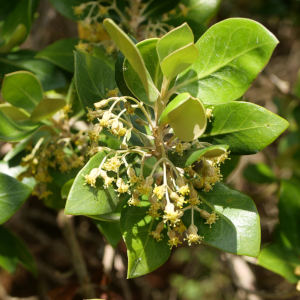
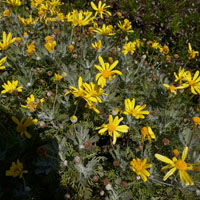

Achillea . . . . . Yarrow or Millefoil
Achillea millefolium . . . . Yarrow
Common

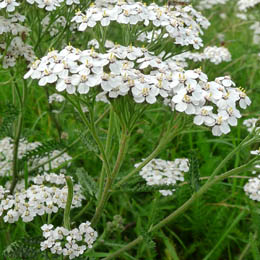
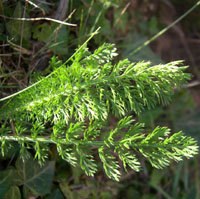

Achillea ptarmica . . . . Sneezewort
Damp grassy places and fields


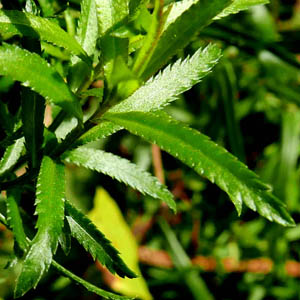
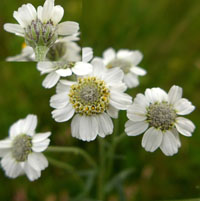
Double versions occur, esp. as garden escapes

Ambrosia . . . . . Ragweed
Ambrosia artemisiifolia . . . . Common Ragweed
Birdseed alien, esp. in C Br (Photos 1 & 2 GP Buckley)

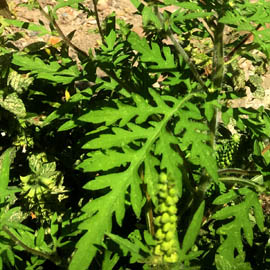
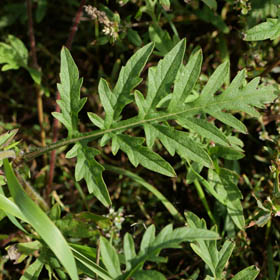
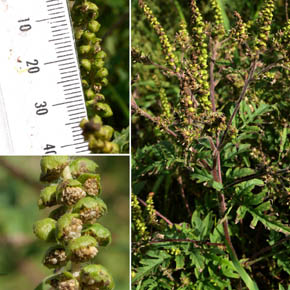
See also
Artemisia 
Anaphalis . . . . . Pearly Everlasting
Anaphalis margaritacea . . . . Pearly Everlasting
Estabished as garden escape (from W USA) at scattered sites in Br, esp. in S Wa and N Sc

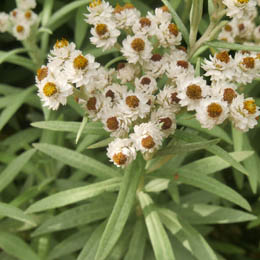
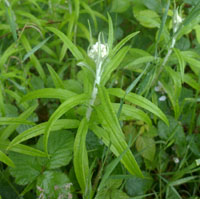
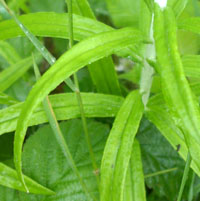
Antennaria . . . . . Mountain Everlasting
Antennaria dioica . . . . Mountain Everlasting
Heaths and mountain slopes esp. in N

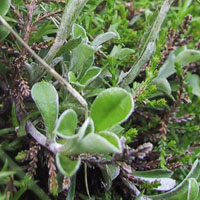

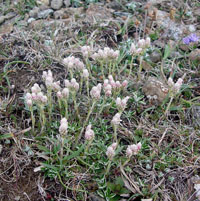
Anthemis . . . . . Chamomile
Leaflets +/- flattened
Anthemis arvensis . . . . Corn Chamomile
Locally frequent, mostly in S & C Br; fls 20-40 mm; see also Cota austriaca for differences

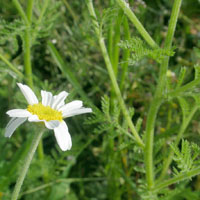
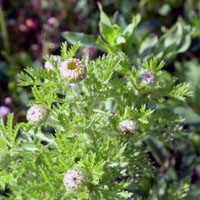
See also - A. cotula (Stinking Chamomile) - which is similar but with smaller fl (c.12-25mm), hairless with unpleasant smell) and see also Cota austriaca Austrian Chamomile which has more regularly lobed leaflets and fruit +/- prickly.
Also:
Arctium . . . . . Burdock
Arctium minus . . . . Lesser Burdock
Widely distributed in woods, waysides and shady places (3 subspp. recognised but all intermediates occur).

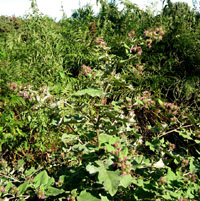

Arctium lappa . . . . Greater Burdock
Has solid petioles, flower heads >35 mm across and flower stalks 3-10 cm.; widespread in C & S En (Photos 2, 3, 4 - C. Hutchinson)
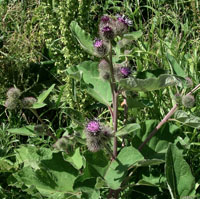
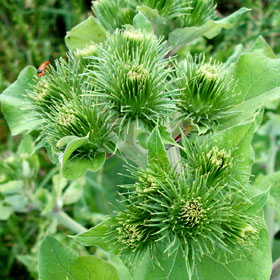
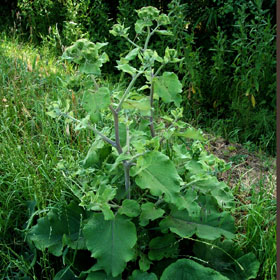
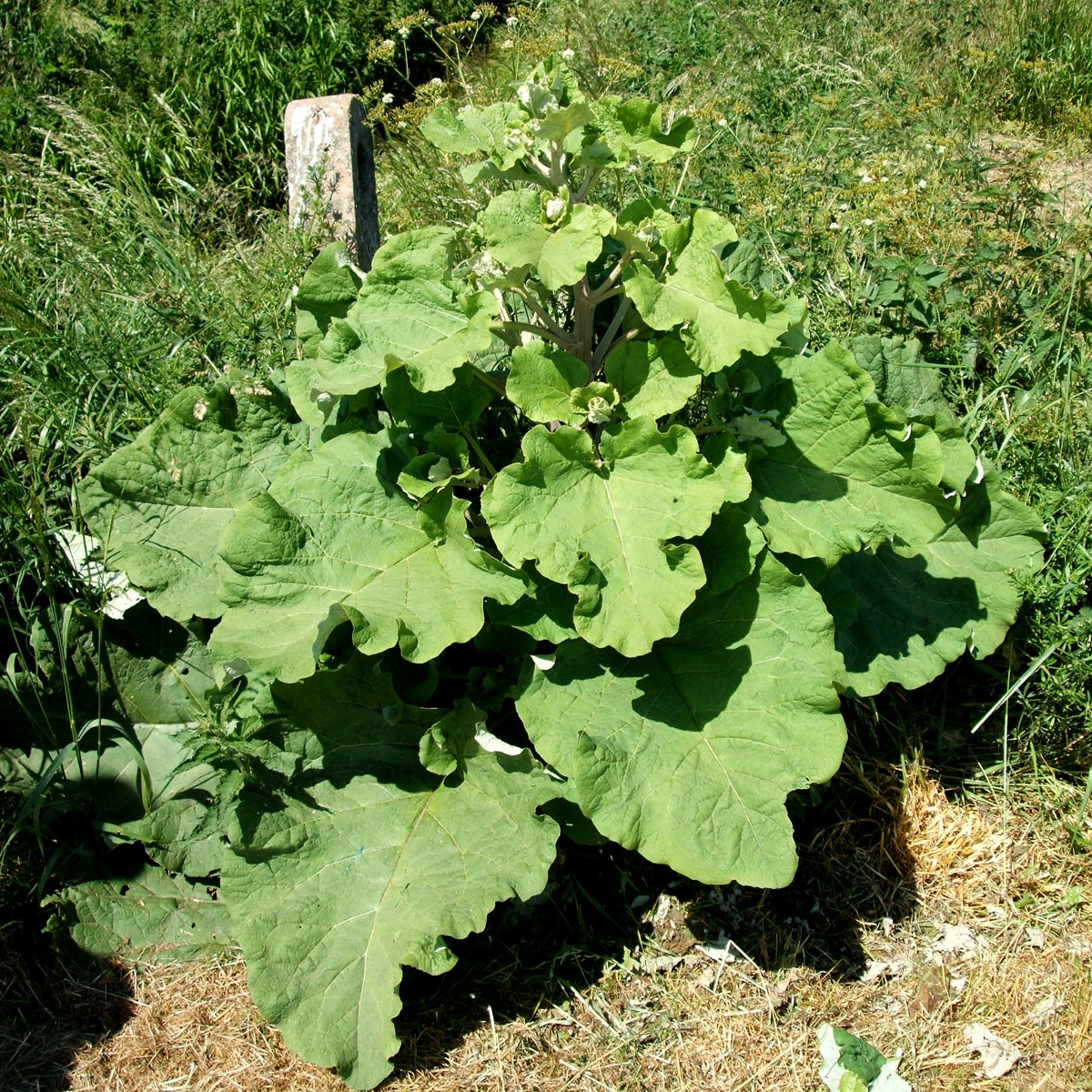
Artemisia . . . . . Mugwort
Choose between:
Mugwort
Sea Wormwood
Wormwood
Field Wormwood
Tarragon
Annual Mugwort
Chinese Mugwort
Norwegian Mugwort
A number of other less common spp. may be found in the BI
Artemisia absinthum . . . . Wormwood
Silky-hairy both sides of leaf; Common in C En & N Wa, more scattered elsewhere but rare in Ire
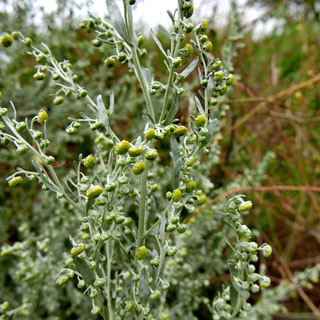
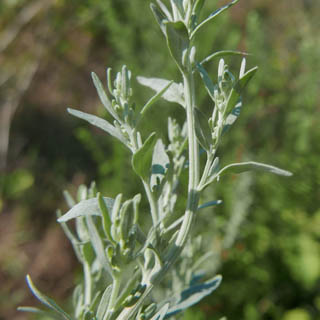
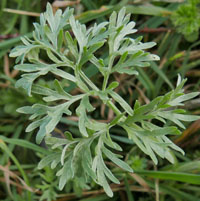
Artemisia annua . . . . Sweet Wormwood, Annual Mugwort
Uncommon sweetly-smelling casual on waste ground, sometimes grown as a herb
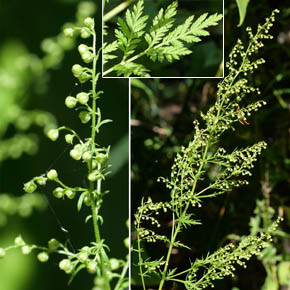
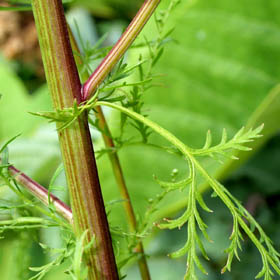
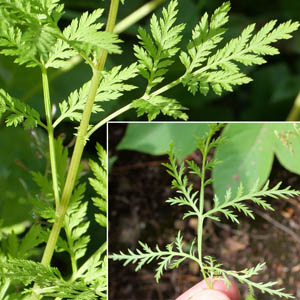
Artemisia campestris . . . . Field Wormwood
A rare plant of E Anglia; a related plant is v. local on sand dunes in W Br (photos R. Horton)
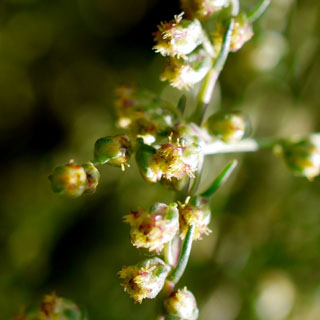
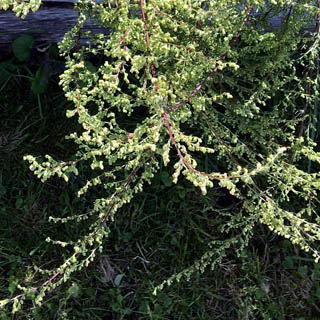
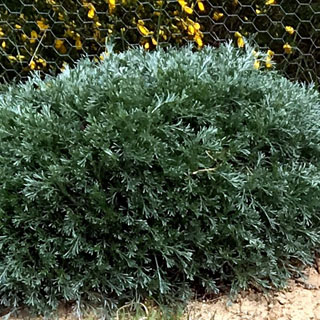
Artemisia dracunculus . . . . Tarragon
Scattered as garden escape; smells of tarragon; linear leaves distinguish from other Artemisia spp.

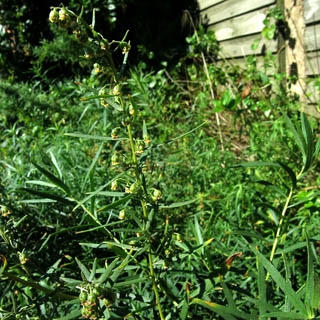
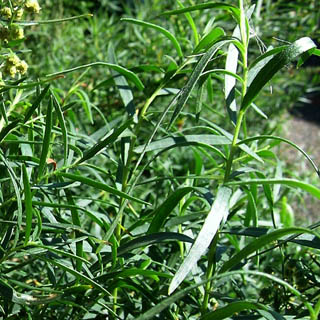
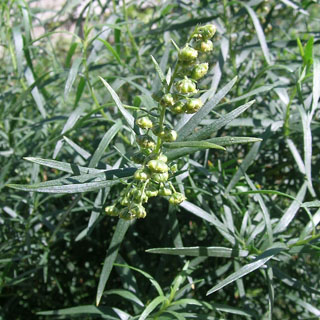
Artemisia maritima . . . . Sea Wormwood
Localised around coasts but not W or N Sc and N Ire (was Seraphidium)
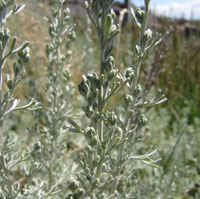
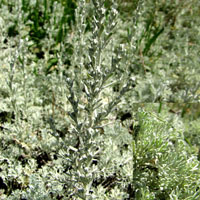
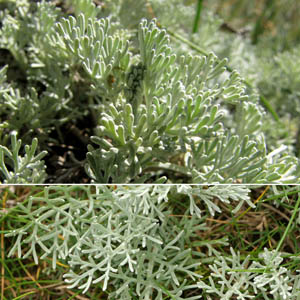

Artemisia norvegica . . . . Norwegian Mugwort
Rare on a couple of mts in NW Sc

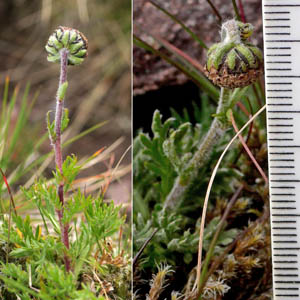
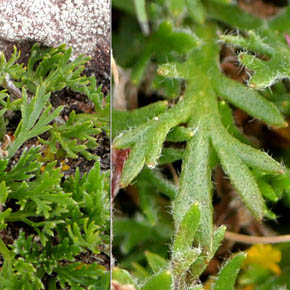
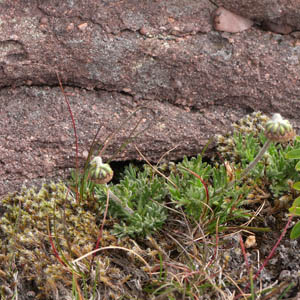
Artemisia verlotiorum . . . . . Chinese Mugwort
Similar to Mugwort (below) but with lvs (linear or with long linear tips) all the way up flower spike; uncommon garden escape
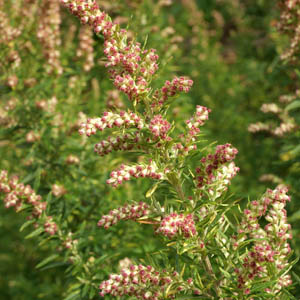
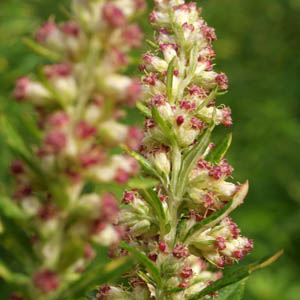
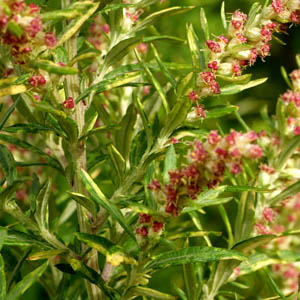
Artemisia vulgaris . . . . . Mugwort
Silky hairy lower side of lvs; common on rough ground and waste places in lowland BI
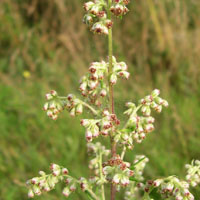

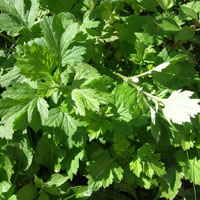
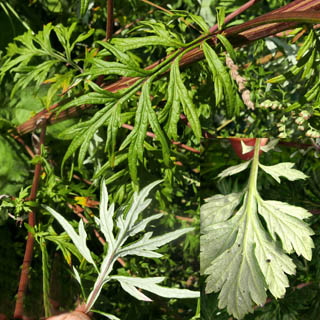
Bellis . . . . . Daisy
Bellis perennis . . . . . Daisy
V common and widespread, esp. on lawns
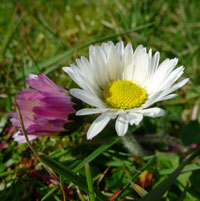

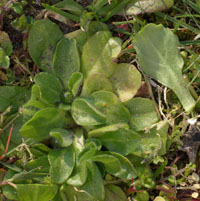
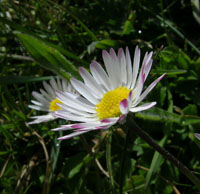
Bidens . . . . . Bur-marigold
Bidens cernua . . . . . Nodding Bur-marigold
Frequent, but rather scattered, in damp places across BI, less so in Sc

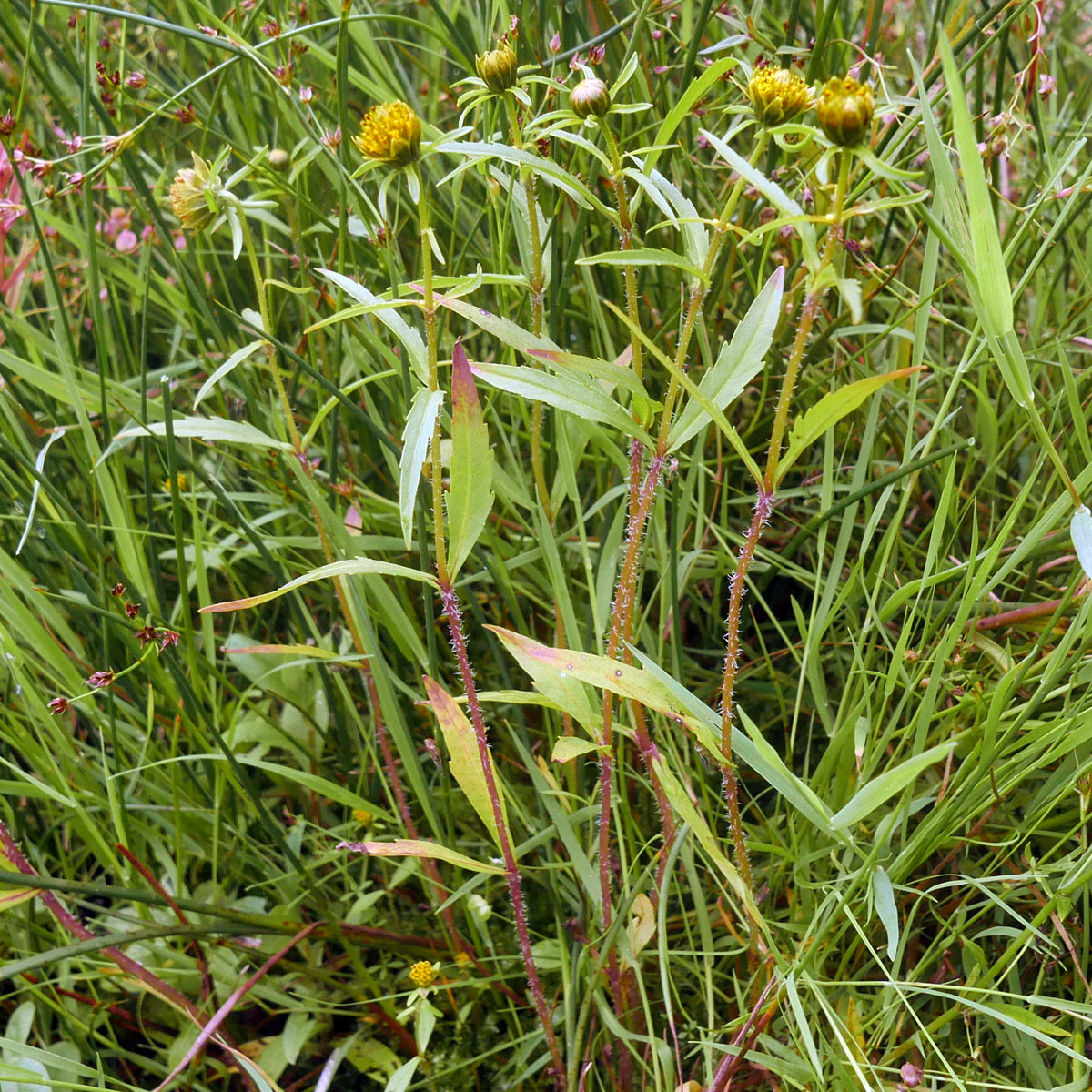
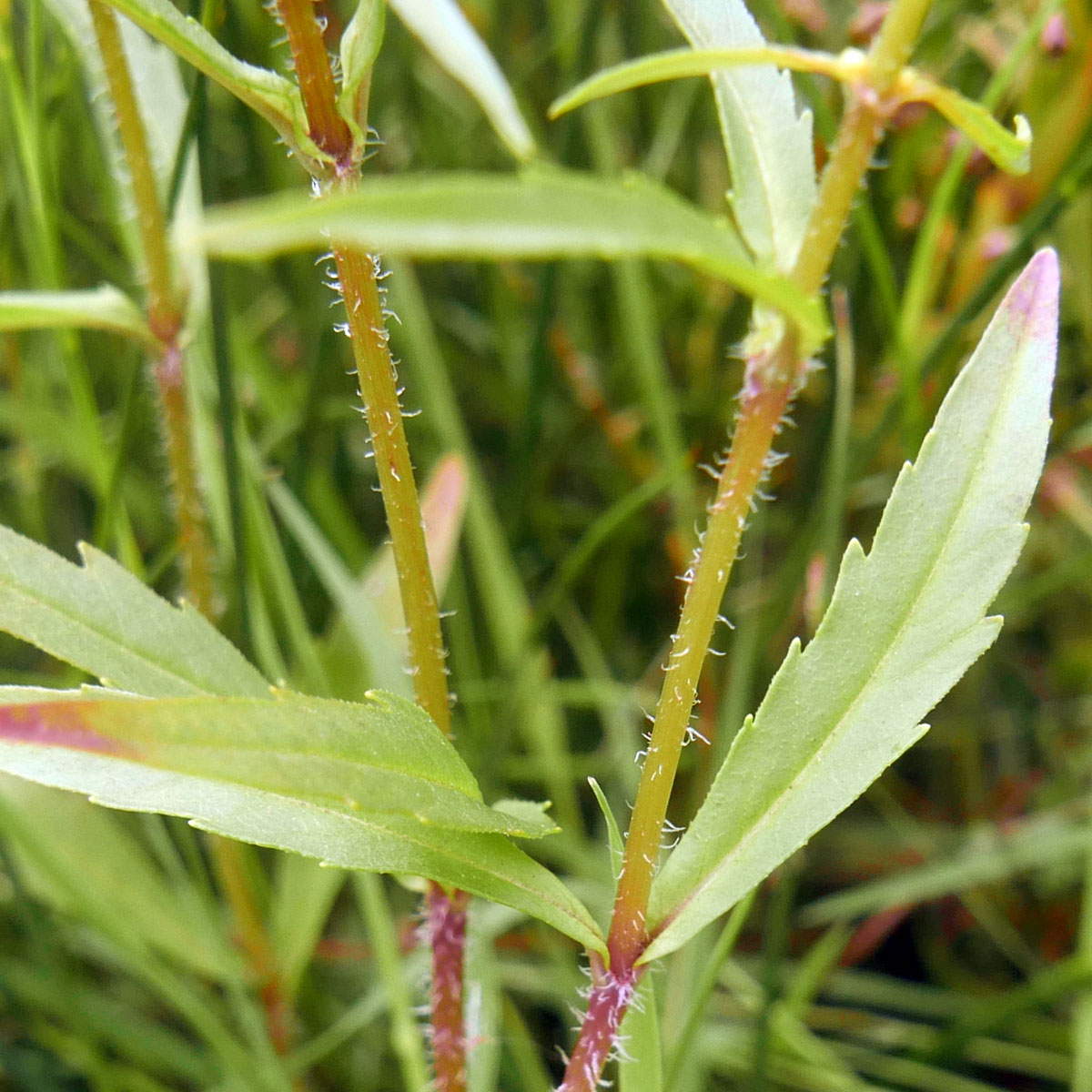
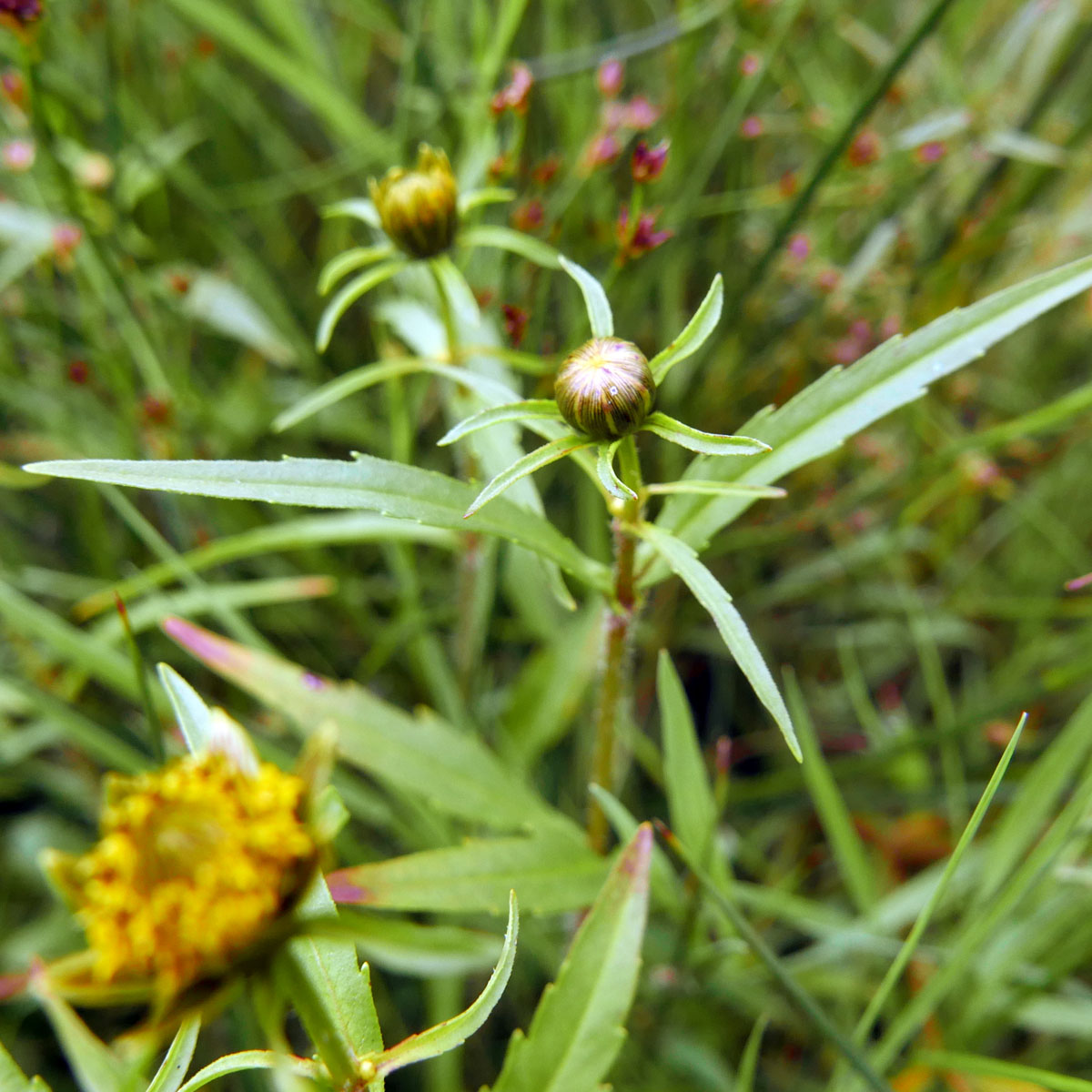
Bidens tripartita . . . . . Trifid Bur-marigold
Frequent, but rather scattered, in damp places across BI, less so in Sc; trifoliate leaves
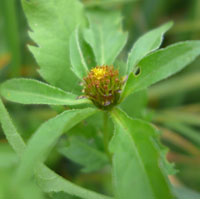
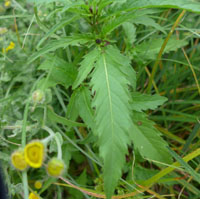
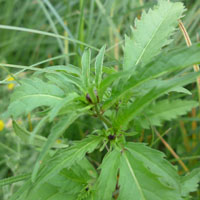
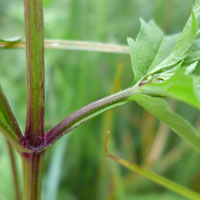
A number of other species have become widely introduced including B. frondosa, "Beggarticks" with forward-directed barbs (rather than backward) on fruits and the following:
Bidens pilosa . . . . . Pitchforks or Black-jack
An alien scattered in En
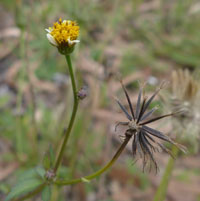
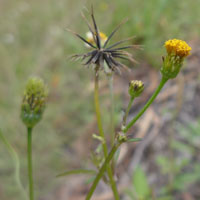
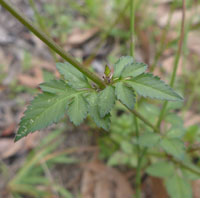
Brachyglottis . . . . . Brachyglottis
Brachyglottis x jubar . . . . . Brachyglottis Senecio 'Sunshine' (was Senecio greyi)
Common in municipal plantings and persists as a throw-out
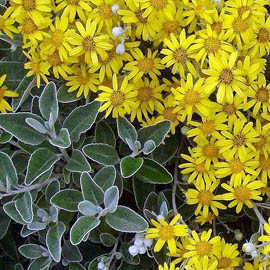

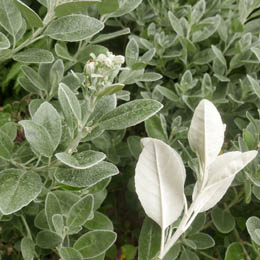
Calendula . . . . . Marigold
Calendula officinalis . . . . . Pot Marigold
Sometimes naturalised, esp. in S
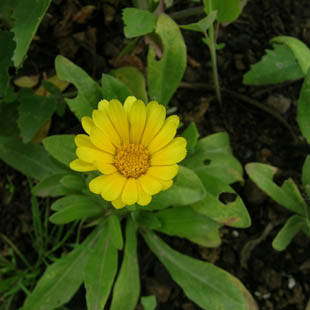
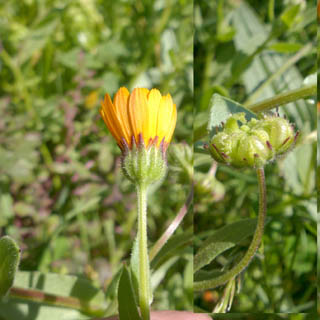
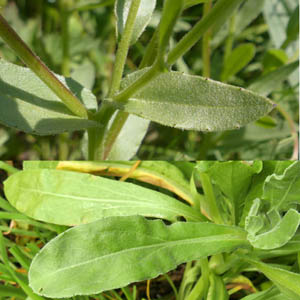
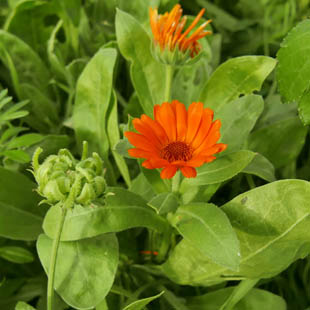
Calendula arvensis . . . . . Field Marigold
Similar to C. officinalis but smaller (lvs 3-8 cm and finely toothed (see arrow) vs. 7-15 cm and hardly toothed; flower heads 10 -20mm vs. 20-70 mm); rather rare in Guernsey and the S. Both have rather hairy leaves compared with the rather smooth Glebionis segetum (photos P Kirby)
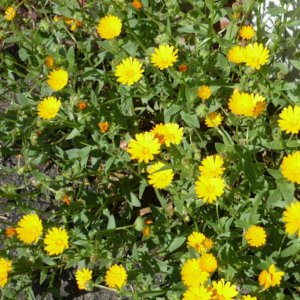
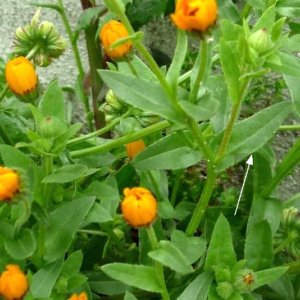
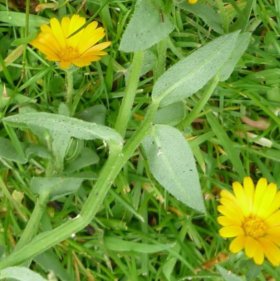
Similar spp. :
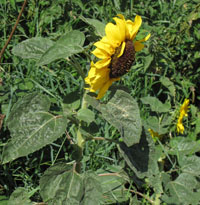
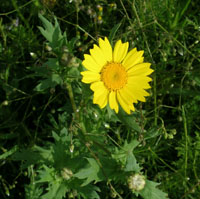
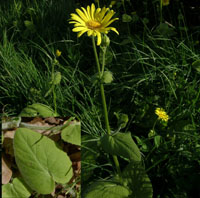
Carduus . . . . . Thistles
See also Cirsium, Onopordum for other thistles
Carduus crispus . . . . Welted Thistle
(= Carduus acanthoides) Reasonably common in En & C Sc & CE Ire, less common on W coasts & Sc highlands; there has been some confusion with C. acanthoides which has flower heads <2cm across>




Carduus nutans . . . . Musk Thistle
Locally frequent on rough ground on calcareous soils, esp. in the S
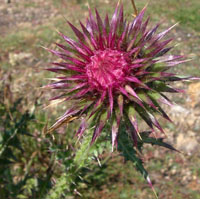

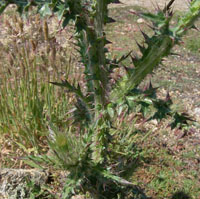
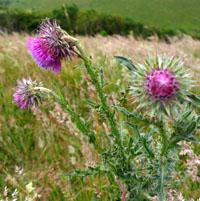
Carduus tenuiflorus . . . . Slender Thistle
Leaves often quite large with white veins and can be mistaken for Silybum (Milk thistle) leaves; locally common esp. near coast in the CI & S Br

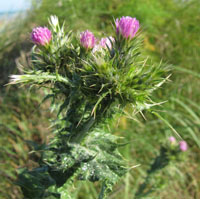
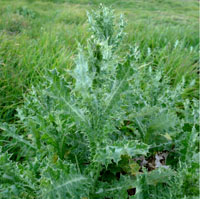
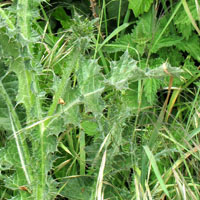
Carlina . . . . . Carline Thistle
Carlina vulgaris . . . . Carline Thistle
Open grassland esp. on calcareous soils exc. N Isles

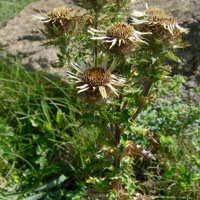
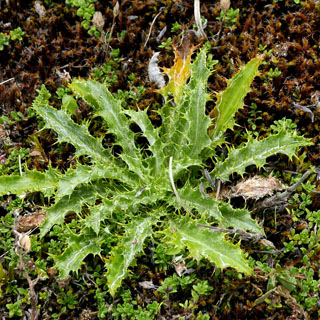
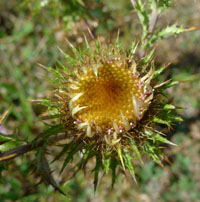
Centaurea . . . . .Knapweeds
Centaurea aspera . . . . Rough Star-thistle
Naturalised in CI

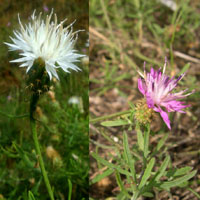
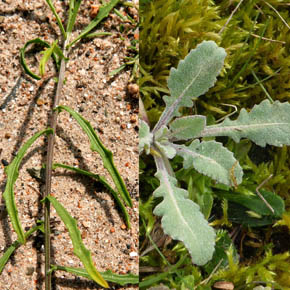
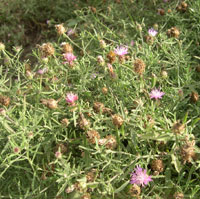
Centaurea cyanus . . . . Cornflower
Formerly common arable weed but now widely planted in wildflower mixes
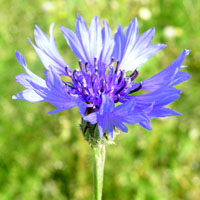

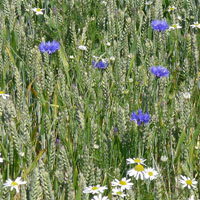
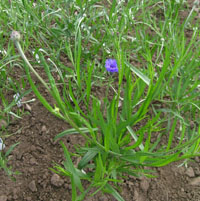
Centaurea montana . . . . Perennial Cornflower
Common in gardens and widely naturalised
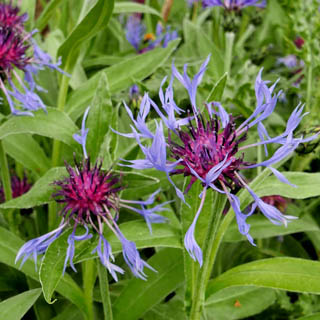
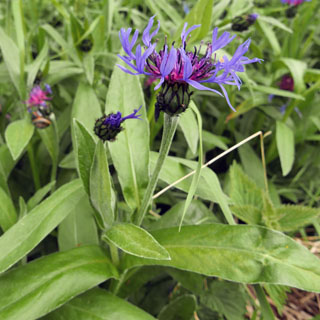
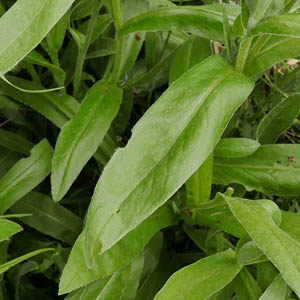
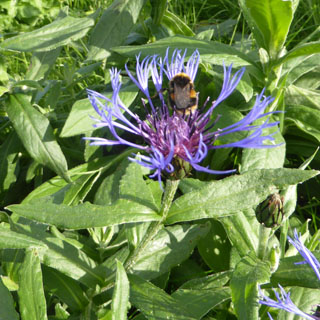
Centaurea nigra . . . . Hardheads or Knapweed
Common


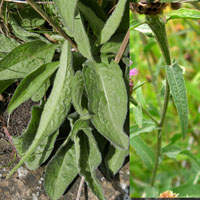

Similar spp. include C. debauxii (Chalk Knapweed; fl head <14 mm across; mostly on chalk in S Br) and C. jacea (Brown Knapweed; on well-drained soils in S En). The latter is distinguished from the others by the irregular brown teeth on the flower head bracts (Left pic.) vs deep regular teeth for C. nigra (mid pic.); radiate forms occur (R)
C. jacea
C. nigra
C. nigra (radiate)
Centaurea scabiosa . . . . Greater Knapweed
More common in S but extends to C Sc; distinguished from C. nigra by divided lvs and greenish (not black) fl head
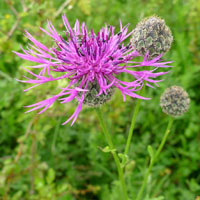

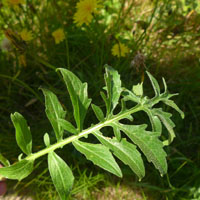
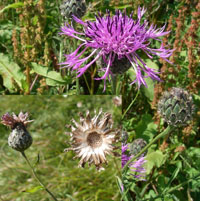
Centaurea solstitialis . . . . Yellow Star-thistle
Casual in C & S Br

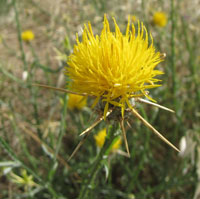
Chamaemelum . . . . . Chamomile
Chamaemelum nobile . . . . Chamomile
Locally frequent esp. in CI, S Br and SW Ire; fls 18-25mm, plant hairy with scented leaves, bracts with white edges

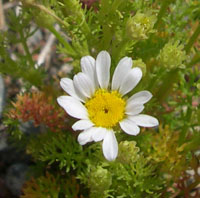
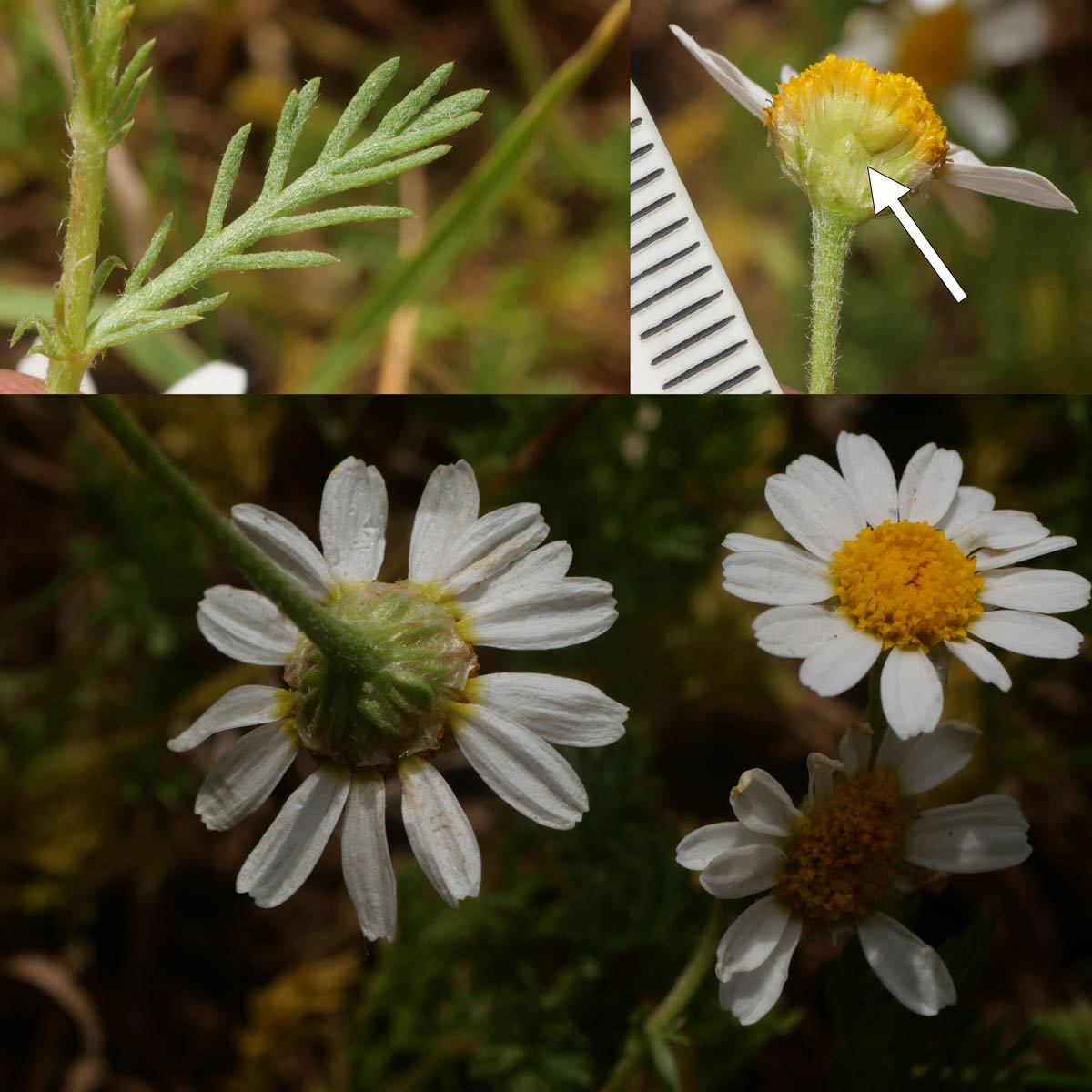
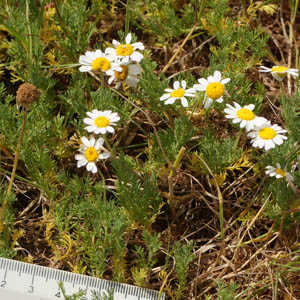
See also:
Matricaria
Tripleurospermum
Anthemis
Leucanthemum
Chrysanthemum . . . . Chrysanthemums
Chrysanthemum . . . . Chrysanthemums
Now see Glebionis , or Leucanthemum
Cicerbita . . . . . Sowthistle
Cicerbita alpina . . . . Alpine Blue-sowthistle
Rare plant of mountains in C Sc, with records in N Ire and N En
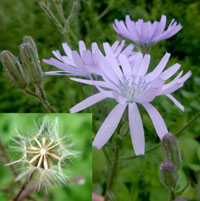
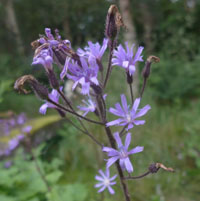
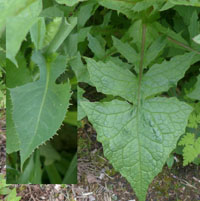
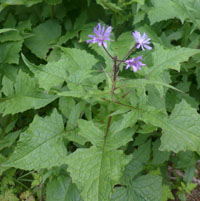
Cicerbita macrophylla . . . . Common Blue-sowthistle
Naturalised on rough and waste ground

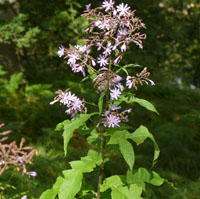
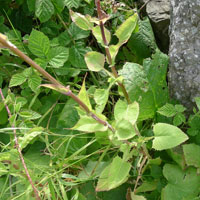
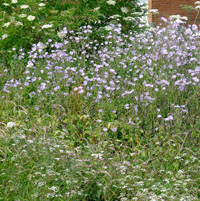
Similar spp. :
Chichory
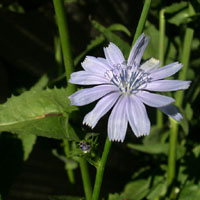
Cichorium . . . . . Chicory
Cichorium intybus . . . . Chicory
Locally common on calcareous soils - mostly of garden origin


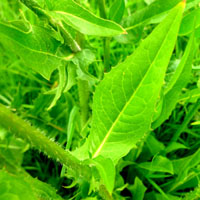
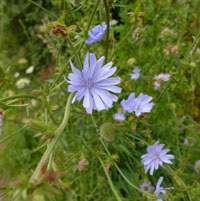
Similar spp. :
Blue sow thistles

Cota . . . . . Chamomiles
Cota austriaca . . . . Austrian Chamomile
Naturalised in S & C Br; very similar to Anthemis arvensis, but receptacle flatter after flowering, and marginal achenes (fruits) flattened, and more feathery leaflets

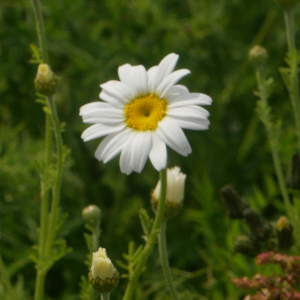
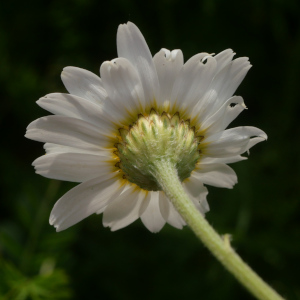
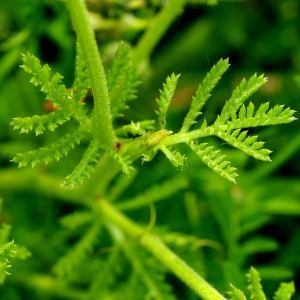
Cota tinctoria . . . . Yellow Chamomile
Naturalised in S & C Br
